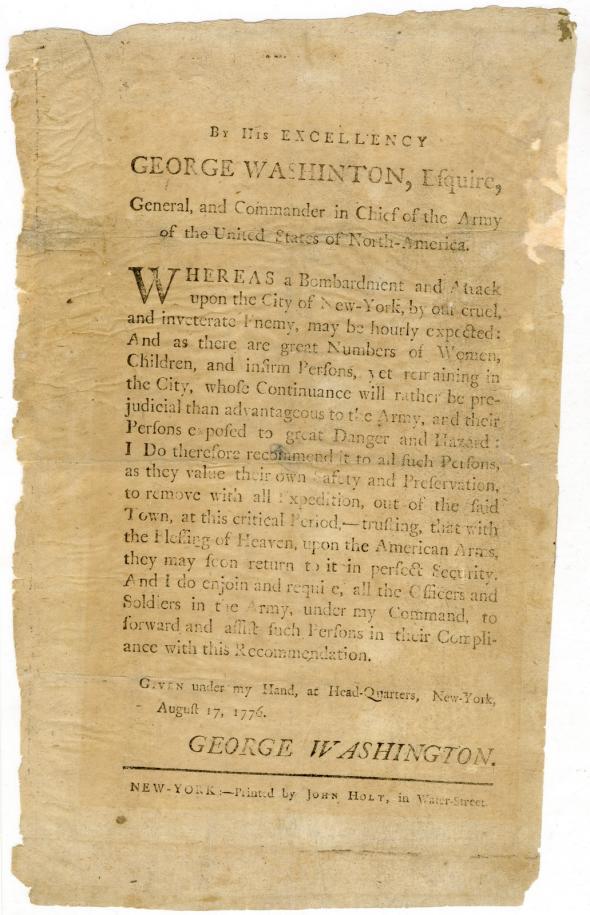In this August 1776 proclamation, printed and distributed in New York City, George Washington asked vulnerable citizens—“Women, Children, and infirm Persons”—to leave the city ahead of the coming conflict with the British Army. The document is currently on display as part of the New-York Historical Society’s exhibition on the Battle of Brooklyn (sometimes known as the Battle of Long Island).
Washington’s 19,000 soldiers had been in the city since April of that year, fortifying it against an anticipated attack. In July, 400 British ships appeared off Staten Island, carrying 32,000 men; Washington arranged his own troops across Manhattan and Brooklyn, trying to guess at the British strategy. In the proclamation, he begs potential evacuees to consider not only their own preservation but also the fact that their presence in the city would be “prejudicial rather than advantageous to the Army,” which would be better off not having to consider their well-being.
Eleven days after issuing this plea, Washington engaged the British in present-day Gowanus and Red Hook. Several tactical errors, including leaving Jamaica Pass unguarded, compounded the numerical disadvantage for the Continental forces in Brooklyn. When Washington realized he could not prevail, he ordered a silent night-time evacuation of 9,000 Continental troops, which preserved the army to fight another day.
After Fort Washington and Fort Lee fell to the British in November of that year, the city remained under British occupation until 1783.
